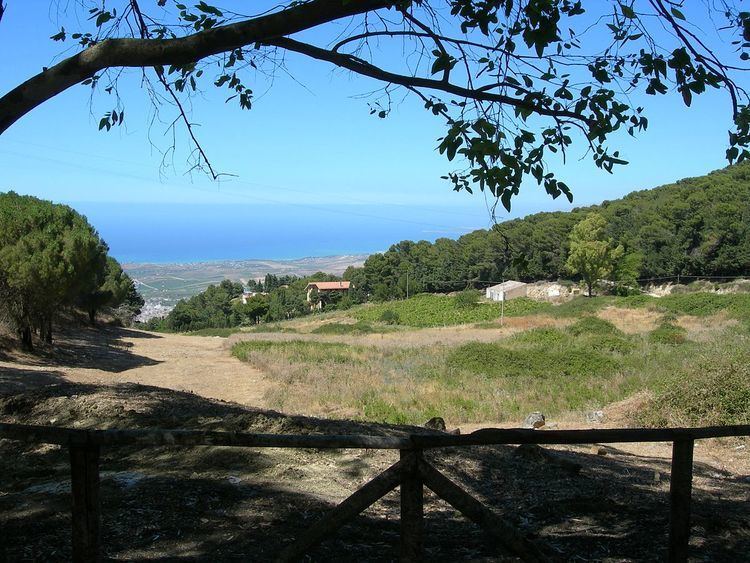Province Province of Trapani | Phone +39 0924 202626 | |
 | ||
Address Via Monte per Monte Bonifato, 123, 91011 Alcamo TP, Italy Hours Open today · Open 24 hoursWednesdayOpen 24 hoursThursdayOpen 24 hoursFridayOpen 24 hoursSaturdayOpen 24 hoursSundayOpen 24 hoursMondayOpen 24 hoursTuesdayOpen 24 hoursSuggest an edit Similar Ostello Cielo d'Alcamo, EcoCamp Casaboli, Hotel La Batia, La Giara, Azienda Agricola Augustali | ||
The Nature Reserve Bosco di Alcamo is a natural protected area of Regione Siciliana established in 1984, and located on the top of monte Bonifato, which dominates the town of Alcamo.
Contents
History
Until the 19th century the Natural Reserve Bosco di Alcamo was covered with a broad-leaved wood which disappeared because of man's action. Since 1921 it has undergone a reforestation work with Aleppo'pine, cypress and umbrella pines. Later there was the gradual reappearance of species of local broad-leaved plants.
Territory
The protected area is dominated by mount Bonifato, a pyramid-shaped calcareous mount 825 metres high s.l.m. near Alcamo, which has an area of 199 hectares. The surrounding landscape is agricultural and with the predominance of vine growing.
Flora
In ancient times on Mount Bonifato there was a wood which was destroyed by the continuous fires and cutting down of timber. The present forest, deriving from an old reforestation, expands on the northern side of the mountain and it is characterised by the presence of two species of pine, the maritime pine (Pinus pinaster) and Aleppo's pine (Pinus halepensis). ). There are also poor remainders of evergreen mediterranean forest among the rocks and in some strips of land, not influenced by human activities: the holm oak, the ash tree, and the downy oak, the native essences.
There are also the typical grassland and ampelodesma (or "disa"), which in the past was used to tie vines and realize ropes and baskets. Other important plants for the local handicraft are the Ferula (used for the realization of chairs, stools and small tables), the dwarf palm tree (used to realize brooms or fill in matresses) Sicilian sumac . used for tanning skins and for dyeing works)[5] and the ash tree (from which they extracted manna).
Besides there is a remarkable presence of Euphorbia, Peony and orchidis (among which visitors can see the rare Orchis commutata and Orchis brancifortii).
There are also different aromatic plants, such as shrubby thyme, Egyptian rue, pennyroyal, rosemary, sage, absinth and oregano.
Fauna
The forest hosts various kinds of birds such as: woodpigeons, jays, turtledoves, kestrels, thrushs, blackbirds, great spotted woodpeckers, robins, buzzards, woodcocks, great tits, greenfinches, serins, tits and goldfinches.
Among the reptiles are found the rat snake, the endemic common snake (called serpe nivura in dialect), the viper, the lizard and the green lizard.
There are also many mammals such as:porcupines, foxes, weasels, wild rabbits, hedgehogs.
Historical interest
Inside and near the reserve there are remains of historical-cultural interest, among which:
Footpaths
The reserve is crossed by 3 footpaths:
Accommodation
A building on the edge of the pine wood should carry out an activity of environmental education within the institutive ends of the reserve.
